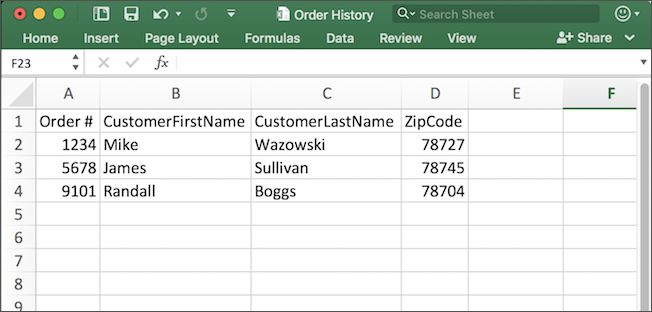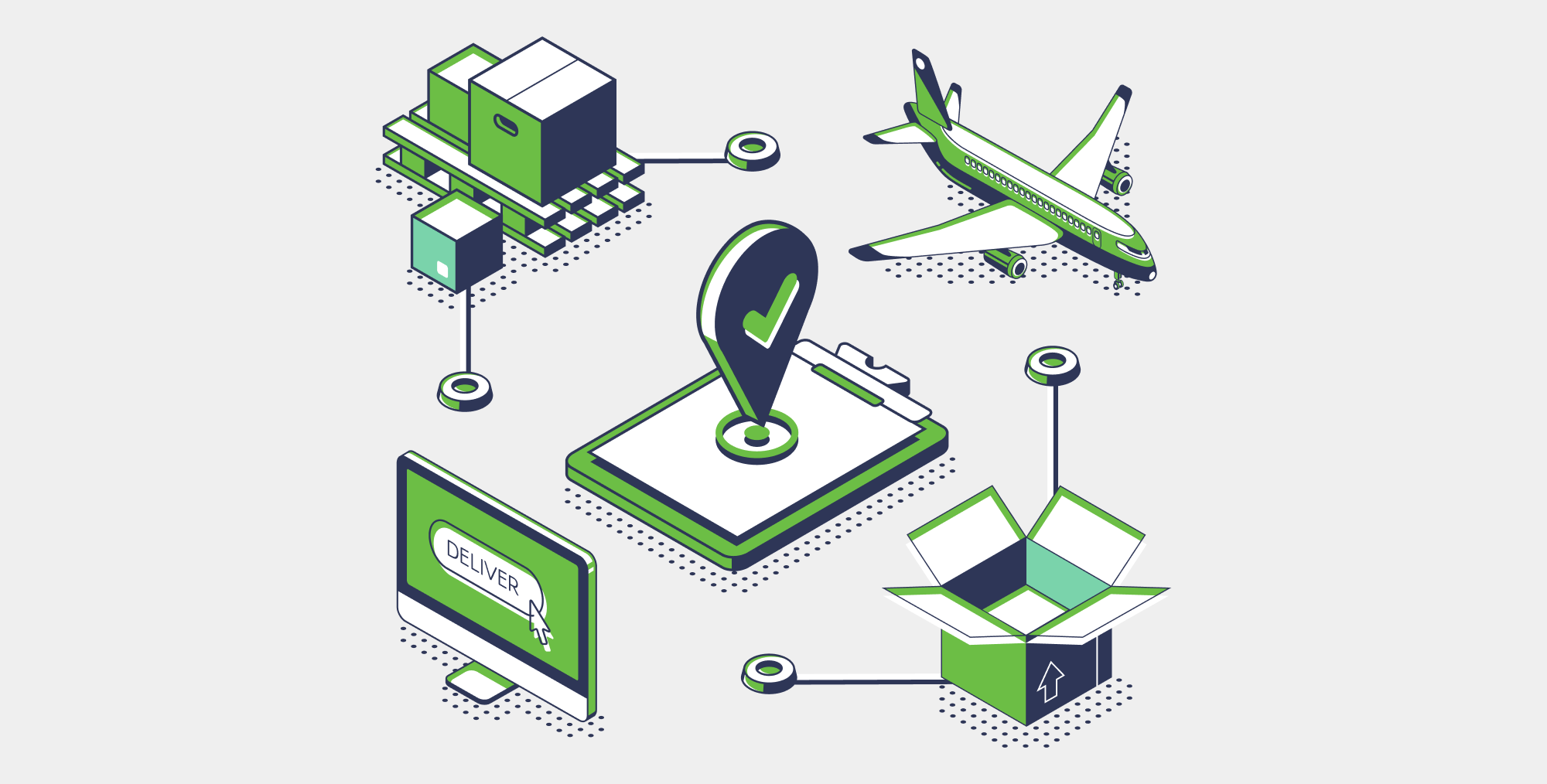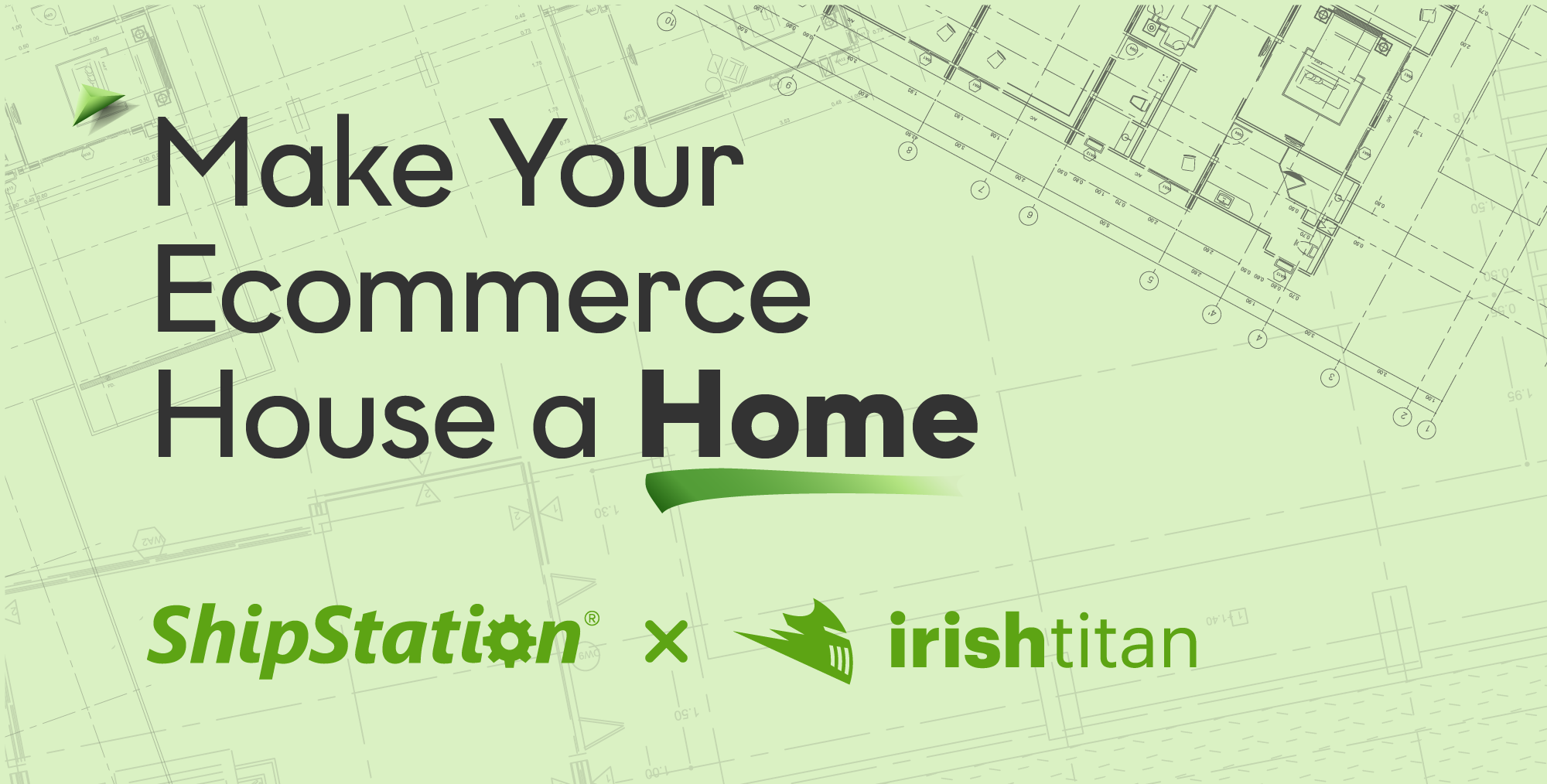The Top 20 Most Valuable Online Retail Abbreviations
Personally, I’m a huge fan of acronyms and abbreviations. It’s probably because I spent an embarrassingly large amount of time in high school on AOL Instant Messenger (RIP).
For an ecommerce company, using retail abbreviations can decrease how long you spend making shipping notes or order status updates. But shorthand only works if everyone is on the same page. Otherwise, you’re just creating more unnecessary back and forth. And in ecommerce, you don’t have time to waste.
Take a look at 20 of the most useful online retail abbreviations. And then get ready to enjoy more concise correspondence.
3PL: Third-Party Logistics
Third-party logistics providers offer outsourced inventory storage and order fulfillment services. Online retailers who prefer not to fulfill orders in house can partner with a 3PL. The 3PL will manage the entire process — from picking and packing to shipping.
Working with a 3PL allows you to use the provider’s large network of fulfillment centers. This helps smaller ecommerce merchants offer more shipping and delivery options. And, in turn, they can improve the customer experience.
AOV: Average Order Value
Also known as average transaction value (ATV), AOV is the average value of all orders placed during a specific period — usually a month. Retailers calculate AOV by dividing the total profit received by the total number of transactions.
Monitoring AOV lets you see how effective individual marketing campaigns are. For example, if you see the AOV for visitors from Facebook are consistently high, you can invest more of your marketing budget there. Additionally, if you’re considering offering flat-rate shipping, knowing your AOV can help you determine how much to charge.
API: Application Programming Interface
(Author’s note: API is one of the most difficult to define retail abbreviations on this list. But I’ll do my best!)
An API is a set of rules and protocols that enable different platforms to interact with each other. Software developers use APIs to retrieve data from one program and transfer it directly to another.
You can use an API to fetch product information from your inventory management system and display it to customers on your website. Ecommerce software providers can also use APIs to add more features to their solutions without having to build the functionality from scratch.
AR: Augmented Reality
Augmented reality technology allows ecommerce brands to superimpose computer-generated images on a customer’s physical environment. Unlike virtual reality which replaces a shopper’s regular environment, AR enhances a shopper’s view of the real world.
For example, a furniture retailer can add AR functionality to its mobile app. Then shoppers have the ability to see how a piece of furniture will look in their living room before they buy it.

(Source)
AR enables ecommerce companies to create a more immersive customer experience. It also lets them make interactions with their brand more personal. And personalization is directly tied to loyalty.
CAC: Customer Acquisition Cost | CLTV: Customer Lifetime Value
Customer acquisition cost is the average amount an online retailer spends to bring in a customer. It’s calculated by taking the total marketing costs for a specific period and dividing it by the number of customers acquired.
Customer lifetime value is the total profit you expect to receive from one customer over the course of your relationship with them. The ratio between CAC and CLTV is one of the most important metrics for online sellers. Because if the amount you’re spending to get customers is more than the revenue they’re bringing in, your business is going to fail. And fast.
CMS: Content Management System
A content management system allows you to create, add, and edit content to your website without complicated coding. Most CMS solutions have drag-and-drop functionality and customizable page templates. This makes building and updating your website super straightforward.
A CMS simplifies the process of updating product pages and increasing their SEO-friendliness. Online sellers can have two options when it comes to a CMS. They can either invest in a standalone tool like WordPress or Drupal or use the CMS functionality of their ecommerce platform.
CRM: Customer Relationship Management (Software)
Customer relationship management software is a platform ecommerce merchants use to organize customer information into a single database. This includes basic customer details such as contact information, demographics, and purchase history. But it also includes more specific information. For example, shopper behavior, interests, and shipping preferences.
CRM solutions give online sellers the data and tools they need to better personalize the customer experience. And when integrated with a marketing automation platform, CRM software enables ecommerce brands to make their marketing campaigns more targeted.
CRO: Conversion Rate Optimization
In online retail, a conversion is usually just a purchase. But conversions can be other actions, such as signing up for your newsletter or downloading your app. Conversion rate optimization is a set of tactics ecommerce companies use to improve the ratio between site visits and conversions.
The goal of CRO is to reduce the time between when a shopper hits your site and when they complete a desired action. Examples of CRO include:
- Simplifying the navigation menu
- Streamlining checkout
- Designing product pages with detailed descriptions and high-quality photos
CSV: Comma-separated Values
In a CSV file, rows of data are separated by (you guessed it) commas. A CSV file can be a text file and look like this:

Or it can look like a run-of-the-mill spreadsheet:

CSV files are widely supported by most ecommerce applications. This makes it easier to transfer data from one software to another. For example, rather than having to manually enter details for every product into your shipping platform individually, you can just export data from your inventory management solution into a CSV file and upload it.
CTA: Call-to-Action
A call-to-action is an image or text that prompts users to complete a specific activity. This could be viewing product details, following your store on Twitter, downloading a coupon, or dozens of other actions.
CTAs urge shoppers to convert. Therefore, they need to be strategically placed on your website and also be relevant to the other content on the page. A CTA should also get straight to the point — e.g. Add to Cart, Checkout, Sign Up.
CTR: Click-through Rate
Click-through rate is a metric that measures how well your marketing campaigns are performing. It’s calculated by dividing the number of shoppers who clicked an ad by the number of impressions the ad received. A lower CTR usually means your ads need a refresh. And a high CTR generally indicates your marketing content is relevant to your audience.
But notice I said “generally”. If your CTR is high but your conversion rate is low, something is wrong. It either means you’re not setting the right expectations for shoppers or you’re targeting too broad of an audience. In other words, don’t optimize based on CTR alone.
CX: Customer Experience
The customer experience is the sum of every interaction a shopper has with an online retailer. This includes each time they …
- Visit your site
- View your social media pages
- Talk to a brand representative
- See your marketing communications
- Place an order
Your commitment to the customer experience is a clear indicator of your commitment to your shoppers. And the quality of the customer experience determines whether a shopper becomes a loyal customer or hates your brand with a fiery passion. (Or anywhere between.)
DDP: Delivery Duty Paid | DDU: Delivery Duty Unpaid
A duty — also known as a tariff — is a tax ecommerce merchants must pay when selling products internationally. With delivery duty paid, the online seller is responsible for all expenses associated with transporting the shipment, clearing the shipment through customs, and applicable taxes.
In the case of delivery duty unpaid, the recipient (i.e. your customer) must pay these fees. Once the shipment arrives, the shopper will have to pay for any outstanding fees before the carrier will deliver their package.
Some customers prefer DDU because they tend to receive their shipment faster and are okay with not knowing the total cost upfront. Other shoppers go for DDP because they’d rather pay a little extra than deal with getting the shipment through customs. Whichever route you take, make sure it’s extremely clear on the checkout page.
EDI: Electronic Data Interchange
Electronic data interchange is the process of transferring documents electronically in a standard format from one business to another. In ecommerce, companies use EDI to exchange purchase orders, invoices, and product information. You can also use to transmit customs documents directly to your preferred carrier.
EDI standards allow ecommerce companies to share data across different platforms and technologies without human intervention. This communication method reduces waste, supports automated order processing, and decreases the risk of human error.
ERP: Enterprise Resource Planning (Software)
Enterprise resource planning software integrates all the necessary functions of running an ecommerce business. This includes marketing, supply chain management, CRM, and accounting.
The biggest benefit of an ERP solution is that it collects and organizes data from multiple sources and ensures it’s accurate. Connecting ERP software to your ecommerce platform not only streamlines back-office operations but also improves the customer experience.
ERP software gives you on-demand access to a whole bunch of data like …
- Customer details and order history
- Inventory levels and product specifications
- Shipping and tracking information
This enables you to make more confident decisions about inventory management and fulfillment. Plus, integrating an ERP with your ecommerce platform helps make sure what the customer sees on your website is always up-to-date.
KPI: Key Performance Indicator
Key performance indicators are measurements of how well an online retailer is progressing towards achieving a specific business goal. KPIs are often confused with metrics, but they actually aren’t the same thing.
Metrics are just plain ol’ calculations, such as monthly order volume or net new customers. KPIs are also measurements, but they’re more strategic and give you better insight into the overall health of the business.
However, ecommerce merchants shouldn’t ignore basic metrics and focus solely on KPIs. Say for example on of your KPIs is “yearly increase in digital marketing ROI.” There’s no way to see if you’re on track to hit that goal unless you monitor core metrics.
NPS: Net Promoter Score
In 2003, Fred Reichheld, a partner at Bain & Company, created the Net Promoter Score as a way to measure customer loyalty and satisfaction. Determining NPS involves asking one question: “On a scale of 1 to 10, what is the likelihood that you would recommend Company X to a friend or colleague?”
Online retailers can include this question in a delivery confirmation email. Or they can send a separate email with only the survey a few days after the customer receives their order.
The simplicity of calculating NPS is one of its biggest benefits. However, like CTR, you shouldn’t evaluate NPS in a vacuum. Review customer comments and complaints so you can see exactly where you’re succeeding and where you’re falling short.
VAT: Value-added Tax
Value Added Tax (VAT) — also known as goods and services tax (GST) — is a fee retailers are charged on every cross-border sale. It’s calculated using a fixed percentage that applies to every shipment, regardless of contents.
Total VAT varies between 5% and 25%, depending on the country, and is generally only charged in the European Union, China, Mexico, and Thailand. Some countries charge only VAT on imported goods, others collect only duties, and a handful of countries impose neither.
![]()
![]()
![]()
This list of retail abbreviations is certainly not exhaustive. But I think I covered most of the more important ones. Are there any I’m missing? Let me know in the comments!






